Top 10 Most Beautiful Historical Sites in Bangladesh
Bangladesh has a rich history and resources due to the reign of the Mughal Empire and the British East India Company. This country has numerous points of ... read more...interest. People travel from all over the world to see these stunning wonders. Now let's have a look at the 10 most beautiful historical sites in Bangladesh.
-
Lalbagh Fort is a 17th-century Mughal fort complex located in the southwestern portion of Dhaka, Bangladesh, along the Buriganga River. Mughal Subahdar Muhammad Azam Shah, a son of Emperor Aurangzeb and subsequently emperor himself, began building in 1678 AD. Shaista Khan, his successor, did not continue the work, although staying in Dhaka until 1688.
The fort was never finished and remained abandoned for a long time. Much of the complex was demolished and is now surrounded by modern structures. During his vice-royalty in Bengal, Mughal Prince Muhammad Azam Shah, Aurangzeb's third son, began construction on the fort in 1678. He spent 15 months in Bengal. When his father, Aurangzeb, summoned him, the fort remained unfinished.
At the time, Shaista Khan was the new subahdar of Dhaka, and he did not finish the fort. Iran Dukht Pari Bibi, Shaista Khan's daughter, died there in 1684. Following her death, he began to believe that the fort was cursed and abandoned it. The mausoleum of Bibi Pari is one of the three primary elements of Lalbagh Fort.
Its popularity waned after Shaista Khan departed Dhaka. The main reason for this was the relocation of the capital from Dhaka to Murshidabad. The fort was abandoned once the Mughal dynasty's reign came to an end. The area was renamed Lalbagh in 1844, replacing Aurangabad, and the fort was renamed Lalbagh Fort.
For a long time, the fort was thought to consist of three structures (the mosque, Bibi Pari's tomb, and the Diwan-i-Aam), two entrances, and a section of the partially ruined fortification wall. Other structures have been discovered as a result of recent excavations by Bangladesh's Department of Archaeology. In the southwest corner of the southern fortification wall is a massive bastion. Utility buildings, a stable, and an administration block were located to the north of the southern fortification wall, and a lovely roof garden with fountains and a water reservoir was located to the west.
Location: Dhaka, Bangladesh
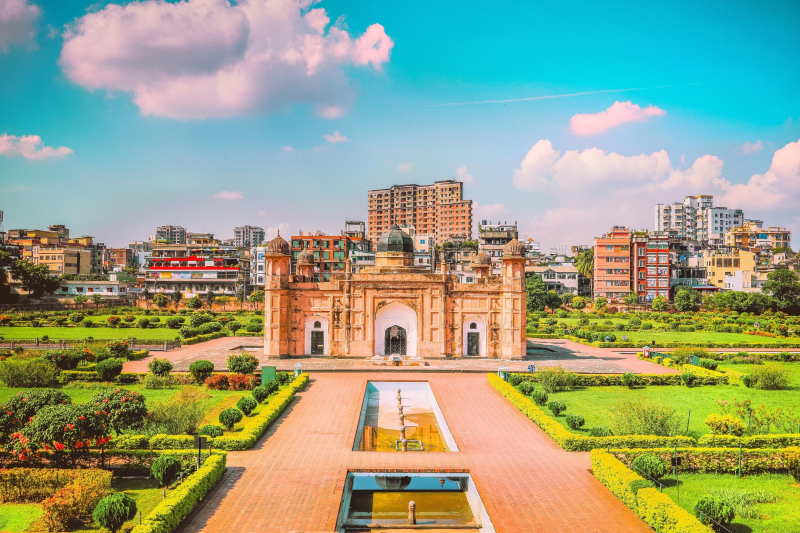
Photo: sg.trip.com Video: Flying Bird -
The former official residence palace and seat of the Nawab of Dhaka, Ahsan Manzil, is now a museum. The structure is located in Kumartoli, Bangladesh, on the banks of the Buriganga River. The building began in 1859 and was completed in 1872. Its architecture was inspired by the Indo-Saracenic Revival. The museum has been declared a national treasure.
Ahsan Manzil is one of Bangladesh's most important architectural landmarks. The structure was built on a 1-meter raised platform, and the two-story palace spans 125.4m by 28.75m. The ground floor stands at 5 meters, while the first floor stands at 5.8 meters. The palace's walls are approximately 0.78 meters thick. On the northern and southern sides of the palace, there are five-meter-high porticos. The Buriganga River is visible from the building's broad front. An open, large stairway runs from the riverside to the second portal, which houses the enormous triple-arched portals. There used to be a fountain in the garden in front of the stairwell, but it no longer exists. Spacious verandahs extend the length of the north and south sides of the house, with an open terrace protruding in the center.
The eastern and western sides of the palace Ahsan Manzil are separated by a wall. Rangmahal is the name of the eastern building with the dome, and Andarmahal is the name of the western building with the living rooms. The middle round space is dominated by a tall octagonal dome. The famed storage, where the Nawabs' valuables were once kept, was in the midst of the five rooms on the ground floor's western half. There is also a Darbar Hall or meeting hall, as well as a chest room, in addition to those rooms.
Location: Kumartoli, Dhaka, Bangladesh
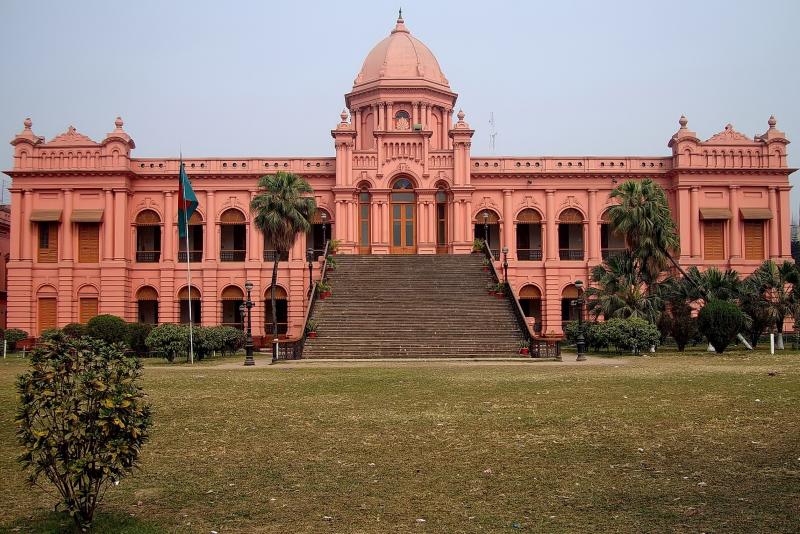
Photo: winway.vn Video: Vromon Guide -
Sonargaon, one of the most beautiful historical sites in Bangladesh, is a historic city in the central region. It relates to the Sonargaon Upazila in Dhaka Division's Narayanganj District.
Sonargaon was an administrative center of eastern Bengal and one of the former capitals of the medieval territory of Bengal. It also served as a river port. Its hinterland, with a vast population of weavers and artisans, was the heart of Bengal's muslin trade. An emporium was established in this region, according to ancient Greek and Roman records, which archaeologists have associated with the Wari-Bateshwar ruins. The Vanga, Samatata, Sena, and Deva kingdoms all had a base in the area.
During the Delhi Sultanate, Sonargaon was an important city. Fakhruddin Mubarak Shah and his son Ikhtiyaruddin Ghazi Shah administered the sultanate from here. It housed the Bengal Sultanate's royal court and mint, as well as served as the Bengal Sultanate's capital during Ghiyasuddin Azam Shah's tenure. Sonargaon grew to be one of Bengal's most prominent townships. A large number of immigrants settled in the area. Mosques and tombs were built by the Sultans. Later, under the leadership of Isa Khan and his son Musa Khan, it became the seat of the Baro-Bhuyan confederacy, which fought Mughal expansion. Sonargaon was thereafter made into a Mughal Bengal district. Merchants erected many Indo-Saracenic townhouses in the Panam district during British colonial control. It was subsequently overshadowed by the nearby Port of Narayanganj, which opened in 1862.
Sonargaon attracts a large number of tourists to Bangladesh each year. The Bangladesh Folk Arts & Crafts Foundation, as well as archaeological monuments, Sufi shrines, Hindu temples, and medieval mosques and tombs, are all located there.
Location: Narayanganj District, Dhaka Division, Bangladesh
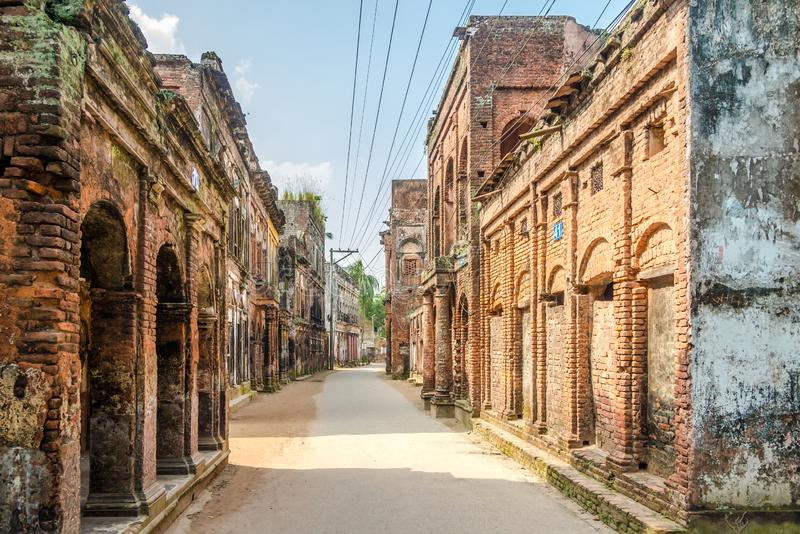
Photo: dreamstime.com Video: Salahuddin Sumon -
The Mahasthangarh Wall gives witness to the glorious history of Pundranagar, the capital of Paundravardhanapura, which has a roughly two-thousand-year-old history. The remains lie 13 kilometers north of Bogura district town, on the west bank of the Karatoya River.
This fortified city, Bengal's first and oldest, is surrounded by a periodic earthen and brick enclosure wall that is 1525 meters long in the north-south direction, 1370 meters broad in the east-west direction, and 5 meters high above the surrounding plains.
In 1928-1929, the first archeological excavations at Mahasthangarh began. During this time, excavations were carried out at three locations: Vita Munir Ghon in Boiragi, Govinda Vita outside the city, and Vita Munir Ghon in Boiragi. Various elements of the fort were periodically excavated in 1960-1961 and then in 1988 after a considerable period of time.
Long-term excavations have revealed nearly continuous settlements within the fort city from the 4th century AD through the Muslim era. Unfinished houses, roads, sewers, culverts, temples, mosques, arches, towers, and other structures from the Pre-Maurya, Gupta, Pala, and Muslim eras have been revealed at 18 levels.
These architectural structures have also been unearthed. Mauryan-era tapering rock fragments, stamped silver coins, molded currency, black, and batch chairs, bulleted warp and embroidery, northern black smooth pottery, and pottery The ceramics, as well as a stone slab with Arabic inscriptions, are particularly noteworthy.
Location: Pundravardhana, Shibganj, Bogra, Bangladesh
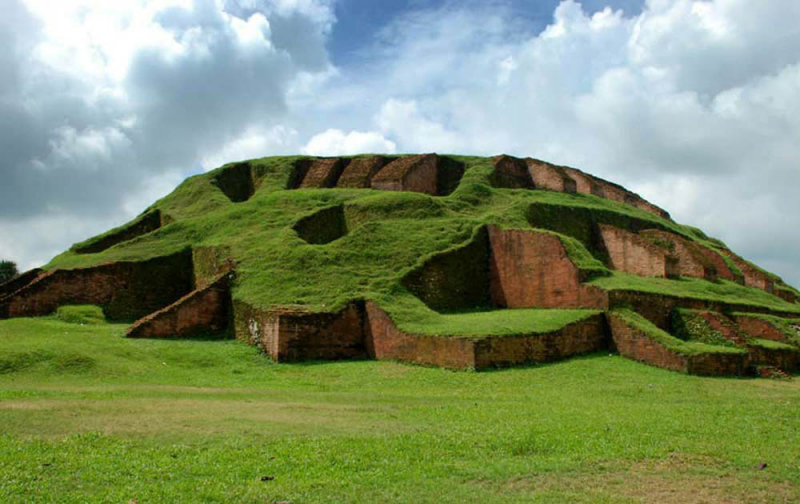
Photo: travelmate.com.bd Video: Beautiful Bangladesh -
The Sixty Dome Mosque is one of the most beautiful historic sites in Bangladesh. It is part of Bagerhat's Mosque City, a UNESCO World Heritage Site. From the Sultanate period (1352–1576), it is Bangladesh's largest mosque. Khan Jahan Ali, the governor of the Sundarbans, erected it during the Bengal Sultanate.
A Muslim colony was formed in the Sundarbans mangrove forest along the coast in the Bagerhat District by a saint-General named Khan Jahan Ali in the middle of the 15th century. During Sultan Nasiruddin Mahmud Shah's reign, he preached in a wealthy city known as "Khalifatabad". Khan Jahan built more than a dozen mosques in this city, the ruins of which are concentrated around the Shait-Gumbad Masjid (160'108'), Bangladesh's most majestic and largest multi-domed mosque. The construction of the mosque began in 1442 and was finished in 1459. The mosque served as a prayer hall, as well as a madrasha and a gathering place.
The Sixty Dome Mosque has Tughlaq-style walls with extremely thick, tapered bricks and a hut-shaped roofline that foreshadows later forms. The mosque has an oblong layout that measures 148'6" x 101'4" on the outside and 123'3" x 76'2" on the inside. There are 81 domes in all, with 77 low domes placed in seven rows of eleven and one dome on each corner. There are four towers on the site. Slender columns divide the interior into multiple aisles and bays, culminating in numerous arches that support the roof.
Location: Bagerhat, Bangladesh
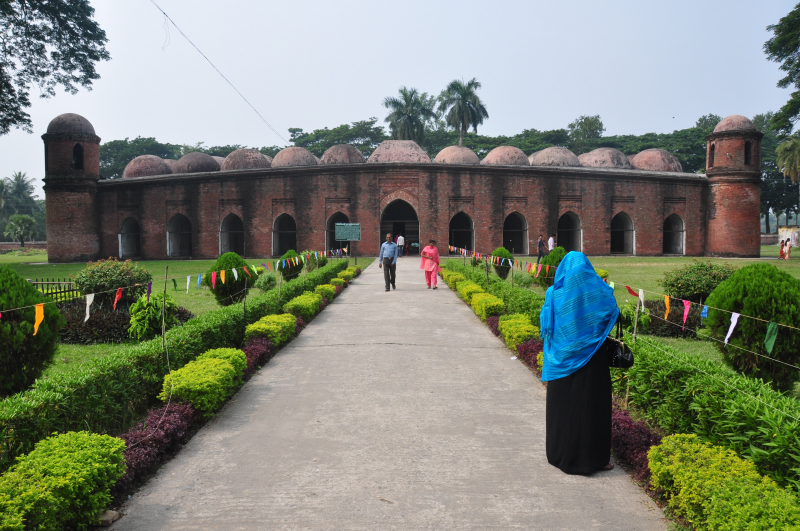
Photo: commons.wikimedia.org Video: Beautiful Bangladesh -
The Liberation War Museum is a museum in Agargaon, Dhaka, Bangladesh's capital, dedicated to the Bangladesh Liberation War, which resulted in Bangladesh's independence from Pakistan.
The Liberation War Museum was founded in 1971 on the initiative of an eight-member board of trustees to preserve the legacy of the Liberation War of 1971. The trustees solicited donations from the general public to help support the museum, as well as relics from the battle, such as personal belongings, weaponry, and human remains, to be displayed, as well as developing an archive of documents and personal histories relating to the war.
The museum has gathered around 21,000 objects (as of 2016), some of which are on display in the museum and many more of which are housed in its archives. Due to the museum's crowd-funded nature (which is independent of the Bangladeshi government) and the general public's collaborative contribution to the museum's collection, the museum portrays itself as the result of a citizen's effort.
Due to a shortage of room, only a percentage of the collected artifacts could be displayed at the original location, therefore it was decided that larger, more contemporary facilities were required. In 2009, an architectural competition was organized for the museum's new design, with architects Tanzim Hasan Salim and Naheed Farzana taking first place. In 2013, land for the new building was purchased in Agargaon, and construction began. The Liberation War Museum's new location was officially inaugurated on April 16, 2017. With 3500 square meters of gallery space, the new building provided significant additional space.
Location: Sher-e Bangla Nagar Civic Centre, Agargaon, Dhaka, Bangladesh
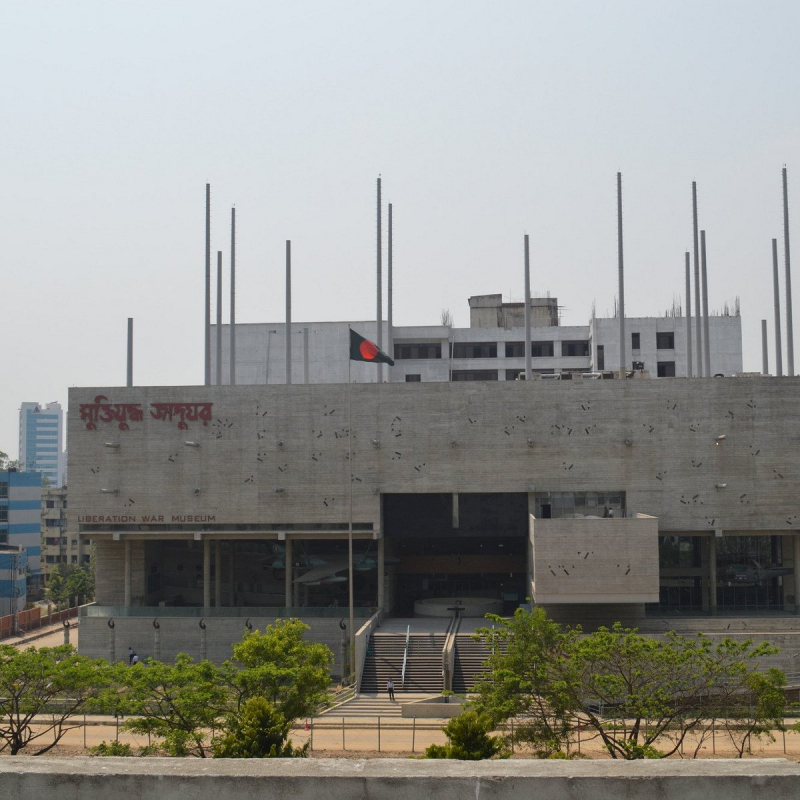
Photo: tripadvisor.co.uk Video: JUST TRAVELS -
Mainamati is a small, dimpled range of hills scattered with more than 50 ancient Buddhist communities spanning from the eighth to the twelfth centuries CE. It was once part of Bengal's historic Tripura division. It runs through the heart of the Bangladeshi district of Comilla. Mainamati is located approximately 8 miles from Comilla. It is home to one of the region's most important Buddhist archaeological sites. The neighboring Comilla Cantonment contains a lovely colonial-era cemetery. Mainamati is named after Govindachandra's mother, the Chandra queen of the same name. Through National Highway 1, Mainamati is 114 kilometers from Dhaka and roughly 162 kilometers from Chittagong. There is also a Buddhist temple nearby.
During World War II, the ruins of Mainamati were rediscovered. The troops discovered ancient ruins at a number of sites along the ridge while putting up an advance camp. Following a hastily conducted survey, the administration identified and safeguarded 18 locations. More than 50 sites were discovered during more regular and rigorous investigations conducted between 1955 and 1957 when the entire ridge was unaffected by human activity.
The Ananda Vihara is the largest of the Mainamati monuments. It depicts a massive religious-cum-educational structure with viharas, stupas, and chapels all around, located in the archaeologically rich Kotbari core area. Shri Anandadeva, the third emperor of the early Deva dynasty, created this Vihara complex, which includes the area's largest water tank, possibly around the end of the 7th or beginning of the 8th century AD.
Location: Comilla, Bangladesh
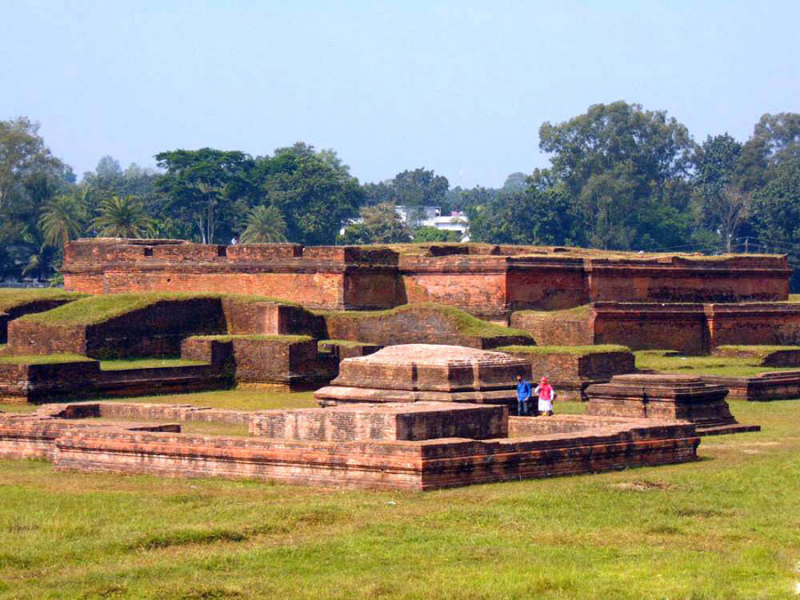
Photo: pathfriend-bd.com Video: ittadischool -
The Star Mosque is a mosque in Dhaka's Armanitola neighborhood. As one of the most beautiful historical sites in Bangladesh, the mosque is ornately designed and adorned with blue star decorations. Mirza Golam Pir constructed it in the early half of the nineteenth century.
This mosque was initially a basic rectangular mosque measuring 33' x 11' with three openings on the east façade (main façade), one on the north wall, and another on the south wall, built in the Mughal style by Mirza Ghulam in the late 18th century. The mosque was surmounted by three domes, the largest of which was in the center. The corners were accentuated by towers, and the façades featured plastered panel embellishment.
Ali Jan Bepari financed its repair in the early twentieth century, which included the addition of a front verandah. 'Chini Tikri,' a popular shattered china decoration, was used to remake the surface. The magnificent blue star mosaic, which earned the mosque its name, is one of the few specimens of distinctive chinitikri mosaic discovered in the mosque. The Department of Architecture expanded the prayer hall in 1987, adding two more domes. It was decorated with imported china clay tiles and used both types of chinitikri application, including solid color, cur clay tiles that were placed in white plaster to produce patterns.
The domes and the exterior are covered in a variety of colored star-shaped china clay tiles. A crescent motif can also be found on the upper portion of the eastern façade. The interior of the work was given a new texture by the use of various glazed tiles. Mosaic floral patterns adorn the three mihrabs and doorways. The plant and vase motif is repeated as a decorative element on the pendentive and the interior of the verandah wall.
Location: Dhaka, Bangladesh
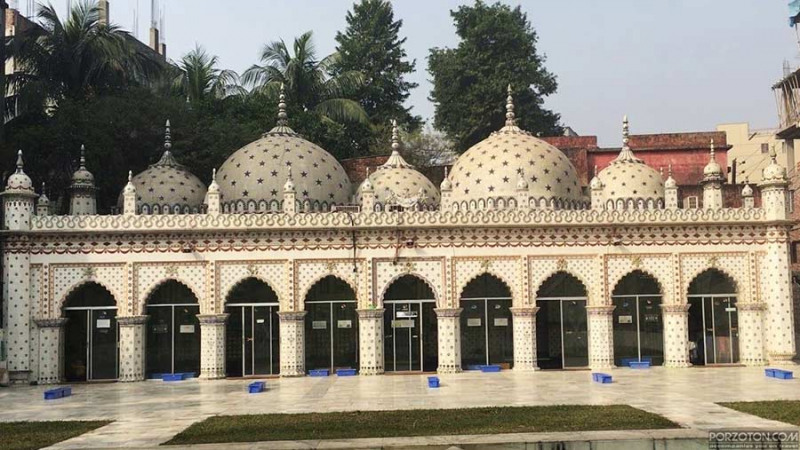
Photo: porzoton.com Video: Jagoroni TV -
The Shaheed Minar is a national monument in Dhaka, Bangladesh, dedicated to those slain during the Bengali Language Movement demonstrations in then-East Pakistan in 1952.
On the 21st and 22nd of February 1952, students from Dhaka University and Dhaka Medical College, as well as political activists, were killed as Pakistani police opened fire on Bengali protestors demanding official recognition for their native language, Bengali. In Dhaka, the slaughter took place near Dhaka Medical College and Ramna Park. On February 23, students from Dhaka Medical College and other educational institutions created a temporary monument, which was quickly removed by Pakistani police on February 26.
The Language Movement gained traction, and after a protracted struggle, Bengali (together with Urdu) was granted official status in Pakistan in 1956. The Shaheed Minar was planned and built to honor the fallen by Bangladeshi sculptors Hamidur Rahman and Novera Ahmed in partnership. Martial law slowed construction, but the monument was finished in 1963 and stood until the Bangladesh Liberation War in 1971 when it was entirely dismantled during Operation Searchlight. It was renovated after Bangladesh got independence later that year. In 1983, it was expanded.
Every year on 21 February (Ekushey February), national, mourning, cultural, and other activities are done to commemorate Language Movement Day or Shaheed Dibas (Martyrs' Day), which is centered on the Shaheed Minar. Since 2000, the 21st of February has also been designated as International Mother Language Day.
Location: University of Dhaka, Dhaka, Bangladesh
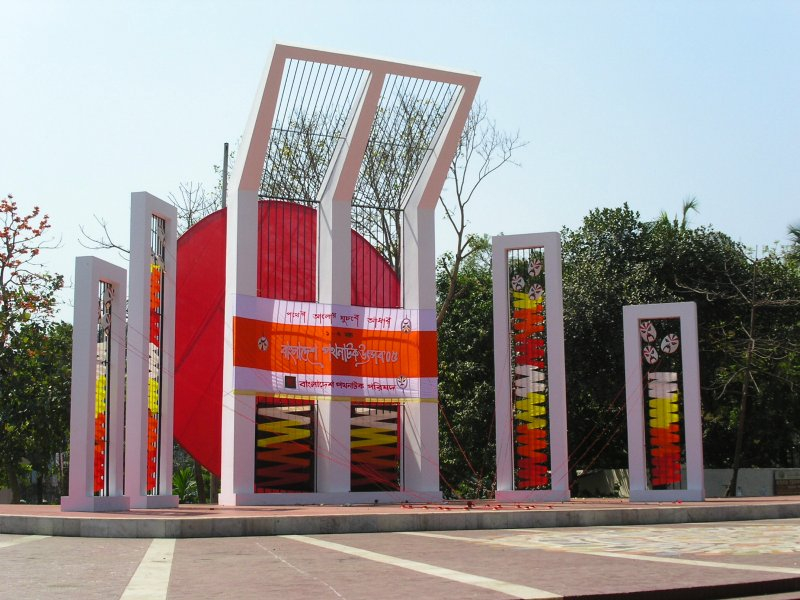
Photo: en.wikipedia.org Video: Tune officiaL GojoL tv -
Regarded as one of the most beautiful historical sites in Bangladesh, the National Martyrs' Memorial is a national monument dedicated to those who perished during the Bangladesh War of Independence in 1971, which resulted in independence and the separation of Bangladesh from Pakistan. The monument is located in Savar, some 35 kilometers northwest of Dhaka. Syed Mainul Hossain designed it, and Concord Group built it.
The monument's planning began in 1976. In June 1978, a countrywide design competition was launched following site selection, road, and land development. Syed Mainul Hossain's design was picked from among the 57 submissions. In 1982, the main structure, artificial lake, and other facilities were finished. It was dedicated on December 16, 1982.
The building is made up of seven pairs of triangular-shaped walls or prisms, with the outermost pair being the lowest in height but the broadest in the spread, the inner pairs gradually changing their aspect ratio, and the innermost pair being the design's apex point. Each of these seven pairs of walls represents a significant chapter in Bangladesh's history, namely the Language Movement in 1952, the United Front's 1954 provincial election victory in 1954, the Constitution Movement in 1956, the movement against the Education Commission in 1962, the Six Point Movement in 1966, the Mass Uprising in 1969, and finally the climactic event of the Independence War in 1971, which saw Bangladesh become a separate independent state.
Location: Savar, Bangladesh
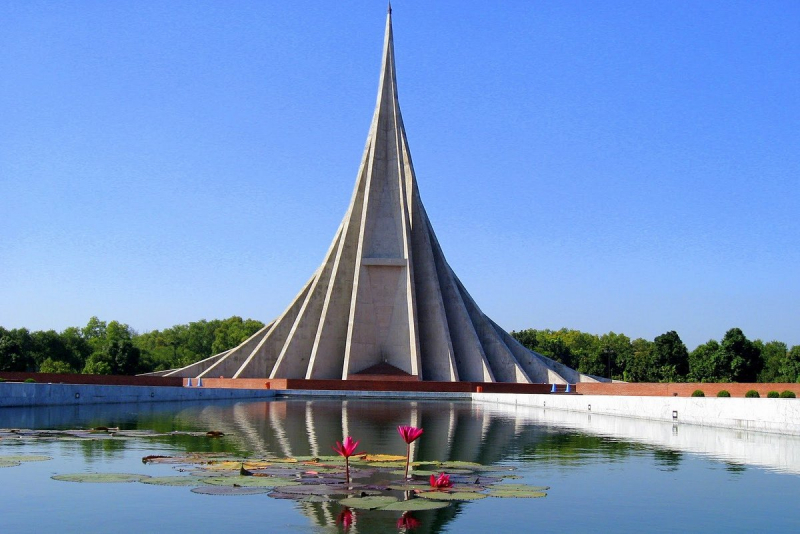
Photo: tripadvisor.com.vn Video: MASHIYAT TV































